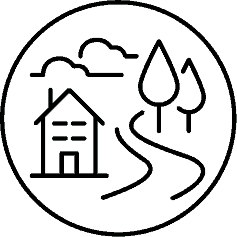Understanding The Standards In Aged Care

Aged care is a term used to describe the provision of support and assistance to elderly residents in their own homes or in residential aged care facilities.
It can encompass everything from personal care and domestic assistance to social and recreational activities, nursing care, and specialist dementia care. But what are the 8 standards in aged care? In this post, we’ll take a look at the key aspects that make up the 8 standards of aged care and explore how they impact the lives of senior Australians.
The Australian Government Aged Care Quality and Safety Commission
If you’ve wondered “who monitors the standards within an aged care facility?” the answer is a regulatory board which sets the 8 standards of aged care that all Australian organisations must abide by — each operator is responsible for meeting these standards for compliance. The values are set to provide seniors with the care and respect they deserve, promoting best practices and empowering residents and their family members.
Standard 1 — Consumer dignity and choice
To meet the first aged care quality standard, an aged care facility must provide seniors with specialised care that focuses on respect, dignity, identity and choice. At LDK, this is represented by our staff — they’re passionate about inclusiveness, privacy, diversity and fostering the freedom of expression in all who are in our care. If seniors feel respected and allowed to express their concerns in an environment that is receptive to change and acceptance, then the first aged care standard has been met.
Standard 2 — Ongoing assessment and planning with consumers
Aged care is an ever-evolving industry that must cater to the changing needs of seniors. The second quality standard in aged care stipulates that an organisation is willing to constantly assess the needs of their seniors and plan for further improvement to help with ongoing general health and well-being.
Standard 3 — Personal care and clinical care
The third standard is a declaration that an aged care facility will constantly provide safe and reliable personal and clinical care according to the needs of each individual. This standard is meant to optimise care in each organisation, ensuring that staff are educated and supported enough to provide the best care possible.
Standard 4 — Services and supports for daily living
Similarly to standard 3, this quality standard in aged care focuses on feedback and effective planning for future development. Reflective questions need to be asked by the organisation, relating to the daily support they provide, the level of safety in the facility and what support networks exist for more effective provision of care. The clear goal here is to have an actionable outline for daily care and build networks to ensure consistent and safe care for seniors.
Standard 5 — Organisation’s service environment
Organisations must provide a safe, clean and well-maintained environment that provides freedom of movement both indoors and outdoors. There has to be a clear focus on optimising the facility’s environment to cater to the general needs of its occupants. If seniors truly feel safe and comfortable in an environment that fosters their sense of belonging, then the standard has been met.
Standard 6 — Feedback and complaints
It is essential that seniors feel comfortable enough to share any and all levels of feedback with the aged care organisation. This must also extend to anyone related to the occupants, including family and friends. The organisation is responsible for clearly outlining the processes involved in providing feedback, ensuring that all parties are aware that they can speak their mind whenever they feel it necessary. This is essential for the continued development of the facility and the staff involved.
Standard 7 — Human resources
The organisation must ensure sufficient staffing and that all staff are skilled and qualified maintaining the safe, respectful provision of care which offers both quality of care and services. If seniors feel safe and treated with a level of respect that shows clear care for their identity, culture, and diversity, this standard will have been met. Residents must have trust in their carers.
Standard 8 — Organisational governance
This all-encompassing standard focuses on the more administrative responsibilities of the organisation in question. Information, financial, regulatory, and improvement system management are essential to this standard’s code. There must be plans in place for improvement of care, policy regulation and management, risk assessment, and a thorough evaluation of the entire organisation’s actions and intentions on a regular basis.
For more information on the aged care quality standards, click here.
LDK — delivering the core 8 standards of aged care for you
If you are looking for aged care, it’s important to know what the 8 standards of aged care are and how they can help you find a community that is accountable and provides the best possible care for your loved one. The 8 standards of aged care were developed by the government to keep facilities honest and give seniors access to essential services. We understand that this process can be daunting, so please get in touch with us today to discuss your options — from The Landings in NSW to Greenway Views in the ACT. At LDK, our team will help you navigate through all of your options so you can learn about our aged care senior living facilities and why you should choose a retirement village with regulated aged care facilities.